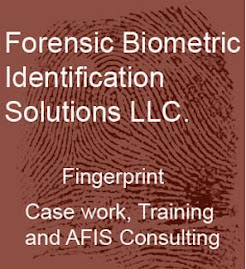
Not all latent examiners are trained using standard training objectives that insure the latent examiners competence. The competence of the latent examiner in many states is left to the local agency and courts may or may not fully understand the training received by the latent examiner. With the weight given fingerprint evidence in court cases, it is critical the examiner be competently trained. As the title indicates the foundation for comparison work is laid in the individuals’ initial training. As indicated earlier there is no standardized training program, license or training accreditation. The courts and attorneys often assume that if an agency meets accreditation standards that the latent examiner has had a better training program and will produce consistently more accurate work, which is not necessarily correct. The American Society of Crime Laboratory Directors (ASCLAD) Laboratory Accreditation Board only requires an agency to have a documented training program and follow it. So it is up to the agency to determine what the training curriculum will contain, there are no standards or guidelines. Many agencies rely on the Scientific Working Group on Friction Ridge Analysis, Study and Technology (SWFAST) suggested guidelines for training to competency which come the closest to a national standard. The guidelines are good but lack the specifics that would help an agency develop a standardized training program. The other problem today is that often the unit directors are proficient in other forensic disciplines and may not have the understanding of latent fingerprints that would be required to oversee a latent training program. In a recent study 72% of agencies surveyed indicated they adhered to training guidelines published by SWFAST another 21% did not use the guidelines and 7% did not know if they used the guidelines. In the survey the respondents were asked questions which would indicate if SWFAST guidelines were actually being followed, the answers indicated that only about 25% of the agencies actually followed SWFAST guidelines in their training program. The Federal agencies did best followed by the state with local agencies at 8% following SWFAST training guidelines. The other point I want to make is that vast majority of latent fingerprint cases taken to court are done at the local agencies, in the study 62% of local agencies had no written training program in place.
The other point brought out in the study was the discrepancy in length of the training program, the training ranged from 6 mo’s to 48 mo’s. SWFAST guidelines suggest a “Minimum: One year of full-time latent print work with the majority of the time spent on the analysis, comparison, and evaluation of impressions. Recommended: Two or more years of full-time latent print work with the majority of the time spent on the analysis, comparison, and evaluation of impressions.”
The County Attorney/District Attorney office should insure the local agency have a training program that will insure competent and accurate latent comparison work.
Bob McAuley Dir. Operations/Training Forensic Biometric Identification Solutions LLC.








